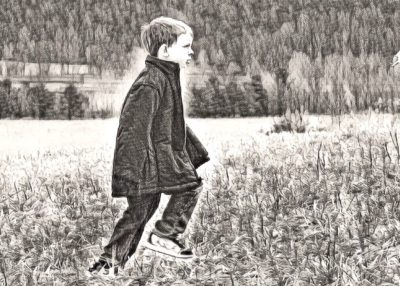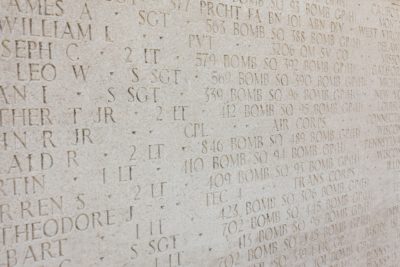
There is a long-running argument concerning character-driven vs. plot-driven writing, where the former is called literary and the latter formulaic. Note which one gets the derogatory label that plot-driven writers abhor. Despite my work being primarily character-driven, I take the position that one cannot thrive without the other. And yet, I struggle with plot as a way to move the story forward. I rely heavily on the inner conflict of my characters to inform what will happen next, which means I rarely outline before writing.
I must be inside the characters’ heads or viewing them from another character’s perspective. I must see them as whole, living, breathing human beings with flaws and tics and specific mannerisms. At times I must become them, rising from my chair to embody the character’s frame and the traits I have assigned through an “outside in” technique my actor daughter and I adapted for character development. Only then can I sit down and watch the scene unfold in actions that reveal who the person is, with or without dialogue. We call this “Character as Verb.” Who are they? How do they move? What do they do? I assign every character a verb which captures the essence of the character’s being or, more importantly, their doing. My character Ora Lee Beckworth in The Pecan Man is meddle, and Eddie is atone. Some examples of other characters might be: Stanley Kowalski (consume), Scarlett O’Hara (claw), Katniss in The Hunger Games (pierce), Celie in The Color Purple (disappear).
Once I have my characters fully developed, I can begin to think about plot. I’m working on my fourth novel now, and I have yet to start a story knowing what it will be about. I know who it’s about. I just don’t know what is going to happen.
For those of you who also live on this edge, I’ll outline my process and hope it gives you a few tips or a little inspiration.

First a name. This is often difficult when you don’t know where you’re going, but we are writers; we can breathe life into our characters, and we can kill them off. We can change their names, or they can change our minds. We can live with what has happened, or we can rewind and start over.
I consider the character’s name the foundation from which I construct physicality of character, as well as demeanor. Mortimer Penobscot is never going to be a superhero, unless he has an alter-ego with a different name. The name you choose may or may not be your first inkling of character, but it likely will be for your reader. Carefully chosen names can do a lot of work in your favor.
I wrote a piece of flash fiction called Star Chatter where the prompt was to create a character who couldn’t sleep for the sound of the stars. I slogged through hundreds of surnames before choosing the name Porter Bacchus. This changed a vague idea into something specific: as stars fall, they screech out biblical scripture only Porter hears. He knows every scripture by heart, and it has driven him mad. The plot would not have been the same without the name.

Next I assign physical traits, anomalies, and quirks. I ask myself questions about the character one might learn upon first meeting someone new. Character charts can be found on numerous writing sites, and I find this particularly helpful. Once the outer shell and ideologies develop, I either begin writing to see how the characters interact with each other, or I go ahead and work our Outside-In method, which is loosely based on the Laban method of dance notation, also used by actors to physicalize characters. With this done, I can throw the characters into situations and see how they interact.
Then comes voice. I believe dialogue’s primary function is to reveal character. With that in mind, I avoid using dialogue to inform the reader of something the characters themselves already know. When you overhear two strangers’ conversation in a coffee shop, you have zero backstory on those characters, but if you listen long enough, you’ll know a lot about who they are. Not necessarily by what they say, but how they say it. What kind of accents do they have? Do they have any verbal tics, like “you see” or “know-dah-mean,” or is the f-word the only adjective they use?

Do they speak with identifying colloquialisms or dialects? Write only the dialects you are accustomed to hearing. I may never write a character from the Bronx, but I can distinguish between the voices of the Mississippi Delta and the mountains of Tennessee, and neither of them sound like a Central Florida farmer. Be specific and consistent, and avoid vague and stereotypical dialect. With colloquialisms, be true to the character, and have some fun with it.
A recognizable voice helps limit the need for dialogue tags. For me, it can be just the cadence or energy that carries their words. Again, I often connect this to that character’s unique verb. Is the speech pattern flowing and proper, or choppy and unconcerned with grammatical structure?
Once the story has begun to flow, the inner musings and yearnings and decisions of my characters shape the story. This is when I ask myself a crucial question: What would it take to make my carefully crafted character do something out of character? This, for me, is where plot begins. The characters’ needs and experiences and reactions continue to drive the tension in the proverbial arc, and my job is to figure out how to bring it to a satisfying resolution.

Joan H. Carter
So many good tips for character development! I write memoir, but I know I can use your ideas to show more about my family and friends. Thank you, Cassie.
Patsy Murray
Thank you Cassie! So many good ideas for characters. I also write a memoir but using your Tips will make the writing much more interesting and exciting.
Art Crummer
Well crafted article. I especially like your discussion of using a background verb-tag for each character (kept in mind by the author). I decided to try it with my characters and discovered, to my delight, that I immediately knew the verb for each char (except one, which informed a change I needed to make in his decision making!). Your discussion of “knowing” your char from the inside is a salient point for all of us; this together with your reminders about choice-of-char-names should, imo, be splashed on the back of every writing craft “How-To” book. Thanks for this excellent, succinct blog.
Cassie Selleck
Thank you, Art…this feels like high praise from a valued source.
Janice Harris
Awesome!
Janice Harris
Awesome info and well appreciated.
Bonnie T. Ogle
Great post, Cassie. I especially like how you brought home the point of character- driven intersecting with plot-driven by making the character do something OUT of character.
I can’t wait to try giving each character a verb tag. Going to use it, first, to check my consistency in something I’ve just finished.
Cassie Selleck
Bonnie, that is another thing I use it for…establishing consistency in one character and diversity between characters. It helps me avoid one-dimensional characters. Thanks!
Skipper Hammond
I was impressed how, in The Pecan Man and The Truth About Grace, dialogue reflected not only the characters’ character but also their changing mood. A couple times during family conversations, I could see the dark clouds gathering over Grace’s head, the scowl forming, the fists clenching.
Mallory O'Connor
Wonderful checklist for character development! Thanks, Cassie!
Marie Q Rogers
This is not a post to read just once, but to study and implement the techniques. Thank you.
Janie Dempsey Watts
Cassie, I just LOVE your way of thinking of each character as a verb, and yes, isn’t Scarlett “claw?” You nailed that one!
Thank you so much for writing this piece which will inspire me and other writers when we work on our stories.